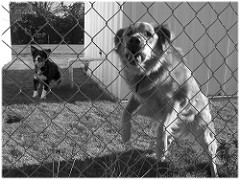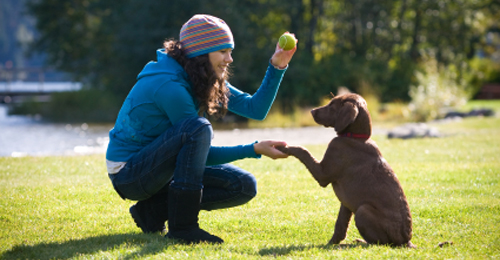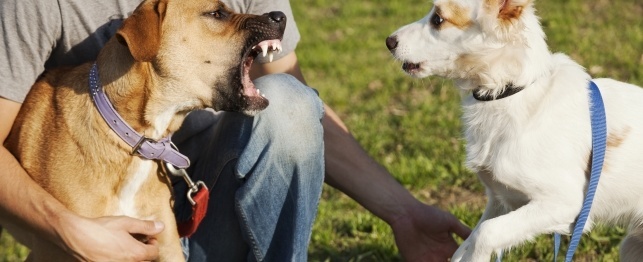If you think teaching your dog basic commands is enough, you might want to know that dog communication methods can enhance your dog training in many ways.
While it is true that you can manage if you teach your dog the basic commands such as sit, stay, down, come, and heel, you will be missing a lot if you do not take it to the next level. It depends on what you want to accomplish and what kind of relationship you want to establish with your dog.
You have to keep in mind that dogs speak a totally different language from humans. Dog communication relies a great deal on body language. You will see this when dogs meet or pass each other on the street. A simple look can tell the other dog a lot. It can indicate dominance and therefore a challenge to the other dog. Or it can simply mean that the male is interested in the female.
How one dog looks at another is just one part of dog language. How dogs face one another, how they stand, how they all hold their heads, how they tilt the ears, and even how they wrinkle their brows will indicate exactly what message is being transmitted.
If you learn to read dog language, you can incorporaste it into how you communicate with your dog, especially during training.
With practice, you can teach your dog your body language. You can do this in part by copying the dog's body language. Playfulness, for example, is often indicated by a dog lowering the front part of his body while keeping his butt in the air. If you did this yourself, he will know right away that you want to play and will become animated himself.
When a dog stands rigid with his tail straight out and up, he is on guard and ready if he is challenged. If he shows you his side and lowers his head, he is submitting to you.
You can use certain body posture to let your dog know that you are not pleased with something he has done or is not doing. In some cases, it might mean pointing or gesturing in some way, but you can also teach your dog to respond with a raised eyebrow or a tilted your head depending on what activity you want from him. This is where knowing dog language can benefit you.
It can be fun going through this training exercise because you will both learn from it. You will discover exactly how to modify your posture to get the result you want. This is an entirely different aspect of training that is not often mentioned. Yet it is very important because you could be sending the wrong message with your body, a message that is contradicted by how you stand.
If you stare your dog down, he'll think you want to complete, usually for the position of authority. He will try to gather from your facial expressions and body language what you mean, so it is important that the two do not send mixed messages.
You can let your dog know you are the boss by standing proud and confident. That's something he would expect from a pack leader.
As you can see, you can make dog communication work for you once you understand his language and teach him yours.

 Five Games That Will Delight Your Dog
Five Games That Will Delight Your Dog
Five Games That Will Delight Your Dog
Five Games That Will Delight Your Dog
 Dogs Play at the Park
Dogs Play at the Park
Dogs Play at the Park
Dogs Play at the Park
 Stop Dog Barking: The Real Approach To Train Your New Family Dog.
Part of training your dog to stop dog barking is learning t
Stop Dog Barking: The Real Approach To Train Your New Family Dog.
Part of training your dog to stop dog barking is learning t
 Teddy Bear Dog
Due for this, the actual who invests in professional canine
Teddy Bear Dog
Due for this, the actual who invests in professional canine
 Dog Parks and Bites: What You Need to Know
Dog Parks and Bites: What You Need to Know
Dog Parks and Bites: What You Need to Know
Dog Parks and Bites: What You Need to Know